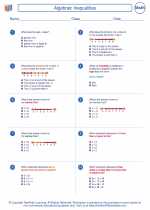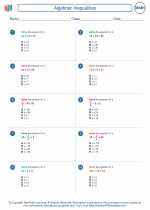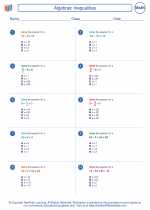Simplification in Mathematics
Simplification in mathematics refers to the process of reducing an expression to its simplest form by combining like terms, performing operations, and applying mathematical rules. This process is used to make expressions easier to work with and understand.
Basic principles of simplification:
- Combining Like Terms: When simplifying expressions, it's important to combine like terms. Like terms have the same variables raised to the same powers.
- Performing Operations: Operations such as addition, subtraction, multiplication, and division are performed according to the rules of arithmetic.
- Applying Mathematical Rules: Mathematical rules such as the distributive property, exponent rules, and order of operations are applied during the simplification process.
Examples of simplification:
Let's consider the following expression: 3x + 2y - 2x + 5y
To simplify this expression, we combine like terms:
3x - 2x + 2y + 5y = (3x - 2x) + (2y + 5y) = x + 7y
Another example involves simplifying an algebraic expression with the distributive property:
Consider the expression: 2(3x + 4)
To simplify, we distribute the 2 to each term inside the parentheses:
2(3x + 4) = 2*3x + 2*4 = 6x + 8
Study Guide for Simplification:
Here are some steps to follow when simplifying expressions:
- Identify like terms and combine them.
- Perform operations such as addition, subtraction, multiplication, and division according to the rules of arithmetic.
- Apply mathematical rules such as the distributive property, exponent rules, and order of operations.
- Check your work by ensuring that the final expression is in its simplest form.
Practice simplifying various expressions to become comfortable with the process. It's important to be familiar with the rules and properties of arithmetic and algebra to effectively simplify expressions.
Understanding simplification is essential for solving equations, evaluating expressions, and working with mathematical models.
Remember to show all the steps in the simplification process to avoid errors and ensure clarity in your work.
With practice and a solid understanding of the principles of simplification, you'll be able to simplify expressions with confidence.
[Simplification] Related Worksheets and Study Guides:
.◂Math Worksheets and Study Guides Seventh Grade. Algebraic Inequalities

 Worksheet/Answer key
Worksheet/Answer key
 Worksheet/Answer key
Worksheet/Answer key
 Worksheet/Answer key
Worksheet/Answer key
